7 Things To Know – SUP Lessons Scotland
Now you’ve had your SUP lessons, you know the basics of standing up, self-rescue – if things go south – and you know how to setup your SUP board and the rest of the kit you’re probably itching to hit the water! Here’s a quick reminder of some of the point raised by us, or your instructor, during the lesson.
SUP is an amazing sport allowing you to experience coastline and lochs from a totally new perspective. It’s also very adaptive – you can choose to do grand touring on flat water, surfing the waves or using your SUP with a wing (ever heard about WingSurfing? Check it out here!). Before you break into any of these disciplines you need to get into a habit of preparing yourself for your sessions. So here’s a handy list.
Things to watch out for:
Weather. Seems logical right? No, not the rain – you’ll be wet anyway, it’s a water sport! Look at the wind (base and gusts) and how it changes throughout the day. If it’s blowing off-shore (as in from the shore outwards into the open water), don’t get in. If it looks like it’ll be over 10 knots (11.5 mph) it’ll be a hard work to paddle into the wind without the right paddling technique. Particularly on inflatable SUP’s. Two of the best weather Apps and websites I can definitely recommend are XC Weather and WindGuru. Always make sure to check two different sources. Weather is a tricky thing and predicting winds is even trickier. Remember that Winter of the Century and the Warmest Summer EVER we are supposed to have every single year? Yeah, check both, thank me later.
Hazards. Is there anything under the water that can damage your board? If it’s an inflatable you don’t want a rock putting a cut in your iSUP. Swimming in with a deflated board is pretty hard. If it’s a hardboard… yeah, repairs are messy. Is there a strong current? Have a look at this guide to learn how to spot a rip current. Is there a large swell? Might be better to head off somewhere else if you’re not well acquainted with waves yet. Especially if you’re on an inflatable board that are generally not made for wavy days. Or if there are many surfers in the water that you can take out with your SUP if it gets pulled – check out the Leash section of this blog.
Clothing. Seen folks SUPing in their regular clothes? It’s all good until you fall into the drink. Then things tend to go sideways if you’ve just came off the catwalk. Wear a wetsuit – and if you’re in Scotland in the open waters – wear a decent one. Cheap neoprene isn’t going to cut it. I’ve been doing plethora of watersports in some really cold waters for almost 2 decades. The last thing you need when things go south is hypothermia. Or just shaking of the cold because the wetsuit you have has been made for bathtubs. Cheap wetsuits are better left for the summer in south of France. Feel free to give us a shout for an advice and don’t waste your hard earned cash on useless neoprene-look-a-likes. Get properly rubbered. Also, having a PFD (lifejacket) onboard with you if you’re going for an open water SUP session is a good idea. Especially if you’re on an inflatable SUP board.
Means of contact. You don’t need a full on radio setup but having a mobile phone in a waterproof pouch won’t hurt if you’re planning on going exploring in open waters. Winds can change and you might end up floating somewhere off shore. Being able to let someone know comes in pretty handy. You can also let someone know you’re heading out for a paddle in a certain location and that you’ll be back before a certain hour and that you’ll let them know when you’re back. Otherwise, ask them to give the boys at RNLI a ring that you might be in trouble.
Leash. That thing that connects your board to your leg or waist. First of all, make sure you’ve got the right thing for the type of SUP’ing you’re doing:
- Flat Water – Coiled SUP Leash attached to your ankle or calf or waist – whatever works best for you.
- Surf – Straight SUP Leash (coiled SUP leash can spring the board back in surf knocking you out so… don’t!) – attached either to your calf or ankle.
- River – Coiled SUP Leash attached to your waist. When you’re in a moving water, the danger of falling off your board and getting trapped in rocks is pretty high when wearing ankle or calf leash. Quick-Release waist attachment is a much safer option.
Second, make sure it’s properly attached to your board. Give it a couple of strong tugs to make sure it’s not going to come off on the first wipe out. If you’re SUP surfing, make sure it’s a really decent leash. If it breaks, there’s a huge chance you’ll send someone to the hospital with a massive SUP board taking people out down the line. I’ll make a separate entry about SUP Surfing and surf etiquette.
Thirdly, when buying a leash, make sure it’s a SUP not a surfboard leash. These are typically thicker and harder-wearing. Surfboards are usually lighter so the leashes are made to suit. The leash is your lifeline out there. If there’s any wind, chances of you catching up with running away SUP are pretty slim. Especially if it’s an inflatable board, they get blown away real quick, so make sure the leash is up to the task.
SUP Board. Seems like a no brainer but here it is. If you’re getting your first SUP make sure you’re not throwing money down the drain on one of the cheaply made SUP-wannabies. If something looks like it’s too good to be true – it probably is. We’ve been asked millions of questions about the £200 paddle board packages. I’m not sure about you, but I wouldn’t trust my life to something that costs less than a mid-market paddle on its own.
Decent SUP boards are made using durable materials, have double chambers to keep you safe on the water and are made in a way that keeps them stiff under your feet. Cheap boards bend like bananas under your weight and instead of going forward you end up going in circles. Better quality SUP’s also require about 15-17psi to be super stiff. The cheap stuff has to be pumped to something silly like 25psi. That pressure combined with cheap quality materials is simply asking for trouble.
Having said that, there are very decent SUP boards that don’t cost an arm and leg – you don’t have to shell out on a specialist SUP to have fun on the water. Navigating through all the cheap stuff that popped up on the market ever-since SUP became very popular can be pretty hard. Give our specialists a shout, we’ll happily find a board within your budget that we’re 100% certain is safe and up for the task. Our boys at RNLI have a difficult job as it is – let’s not add to their daily tasks rescuing SUP’ers with deflated boards in the middle of the sea.
Have fun! Now you’ve got a decent wetsuit, board that doesn’t bend like a deflated banana, your leash is properly attached you’re ready to head out! We go out SUP’ing all year round, winter has some epic scenery to paddle in, waves to catch (when you get to this stage!) and makes you feel a bit more badass when you’re walking into the water around beach goers neatly packed into 7 layers of clothes! Don’t worry about falling in – if you don’t fall, you don’t progress. I constantly find ways of making my SUP life harder – from thin race boards to low-volume surf-SUP’s that sink under my weight and constantly kick me off. It’s all part of the game.
If you ever have any questions regarding SUP spots in Scotland, you want to work on your paddling technique, learn self-rescue techniques, get into SUP surfing or just come along for paddle boarding trips in East Lothian and near Edinburgh with us – just give us a shout – we’re always happy to talk SUP!

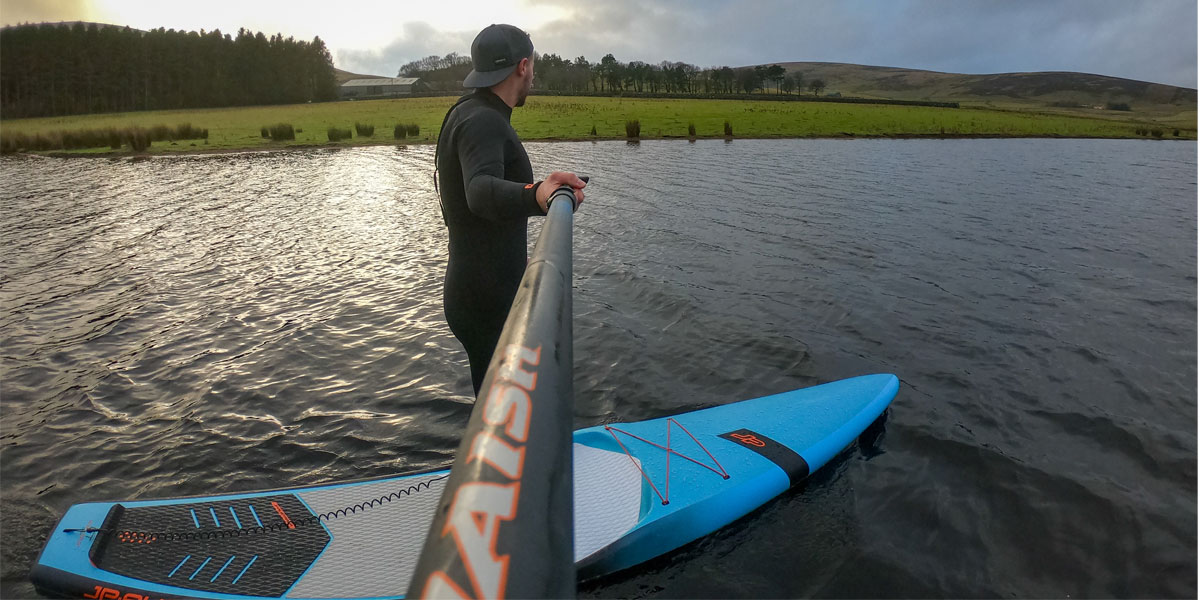
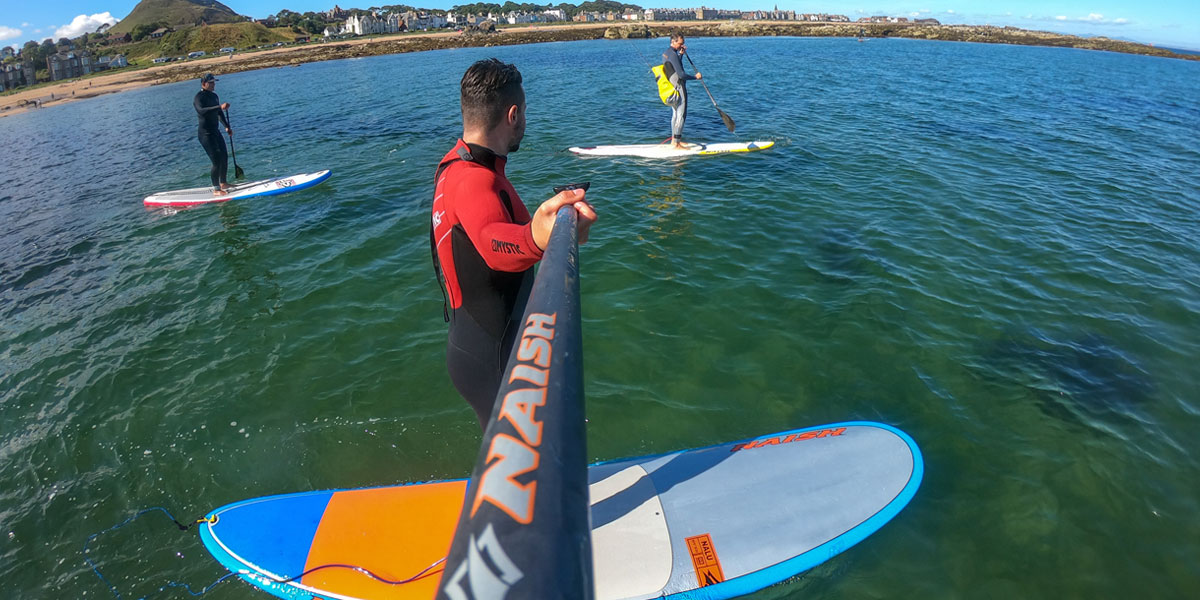
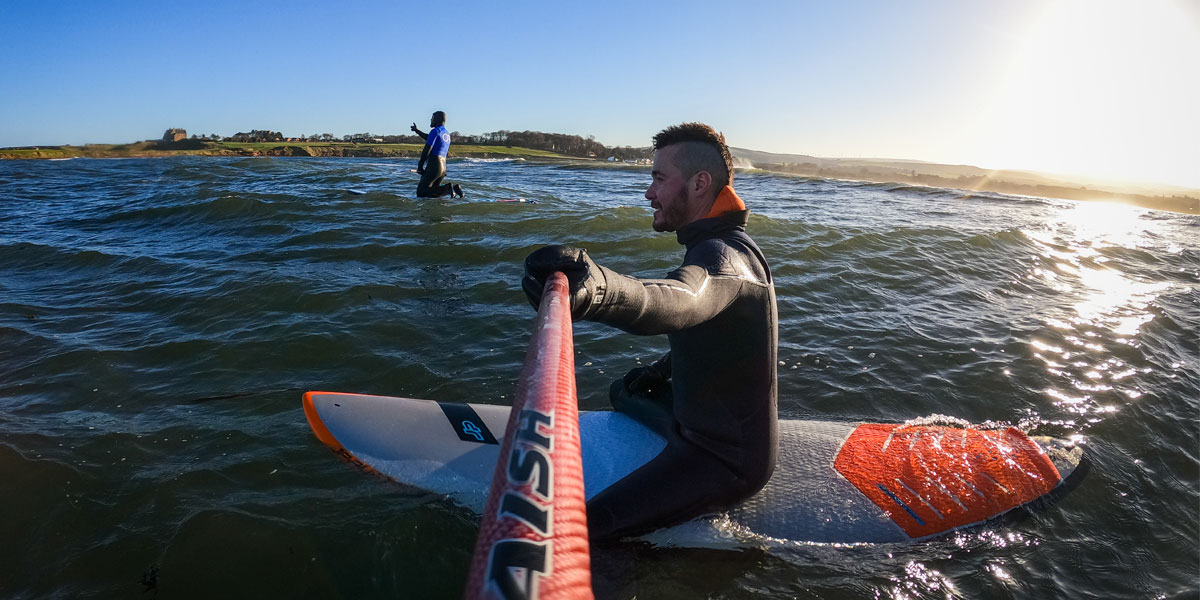
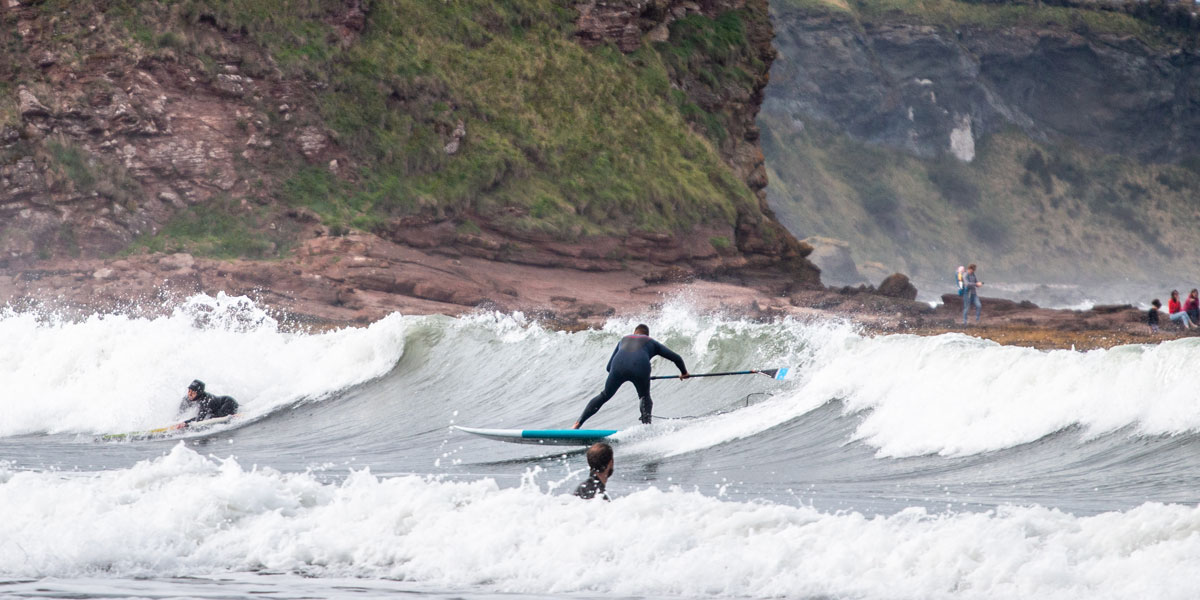
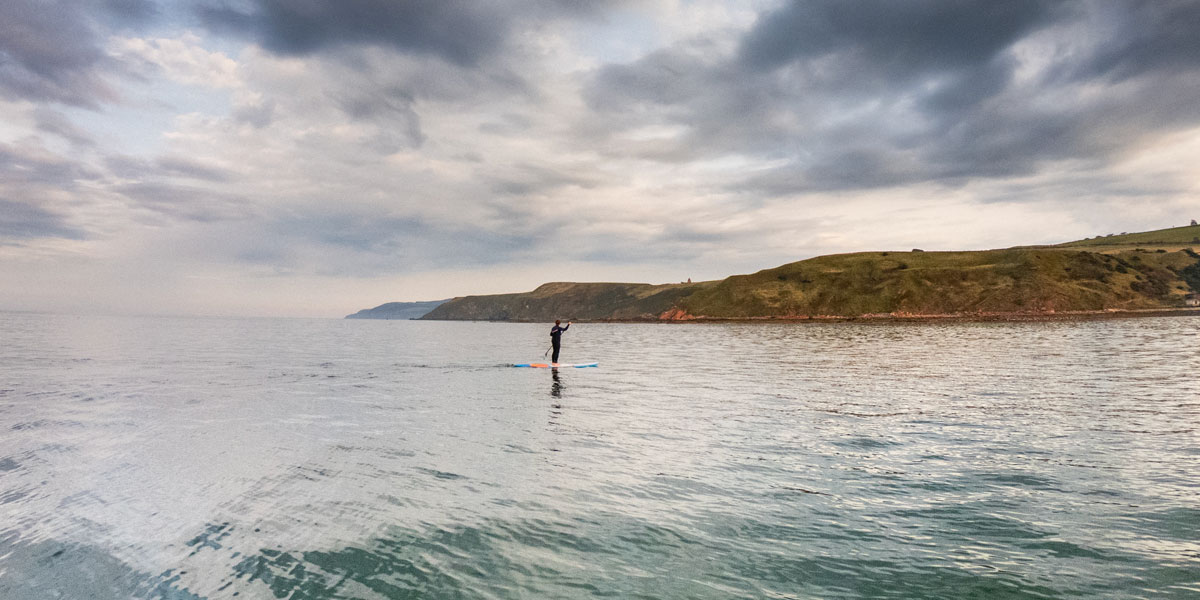
0 Comments